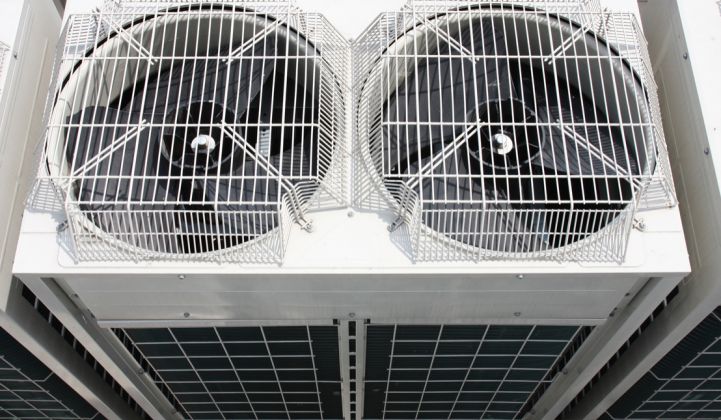Here’s a noteworthy revenue figure to attach to the ill-defined and still-imaginary "internet of things" -- $1000 per endpoint per year in energy savings.
That’s the average amount that Steve Dixon, executive vice president of Regen, says the Toronto-based startup’s technology can squeeze out of every rooftop air conditioner it equips with its “swarm logic” control system. So far, Regen has delivered these savings by retrofitting rooftop AC units with its wirelessly linked control units, which interact on the fly to shave an average 17 percent from customers’ annual energy and demand charges.
But under a partnership announced Monday with internet-of-things technology startup Ayla, Regen won’t have to go do that hardware retrofit anymore. Instead, it’s virtualized that swarm logic to be uploaded, or simply turned on, for devices linked via Ayla’s software, which manages each customer's myriad networking and data management tasks from the device level to the cloud.
“These are swarm-logic-enabled devices,” Dixon said in a Monday interview -- they are run from a server environment, not through dedicated hardware. But that simple step can lead to major reductions in the cost, time and complexity of deploying Regen’s device energy optimization across buildings, he said -- and allow it to work with a lot more than air conditioners.
Indeed, Ayla is already working with a list of device partners that includes Johnson Controls, which demo'd its Ayla-enabled York Wi-Fi thermostats at this year’s CES, and Kidde, which is using Ayla for new smoke and carbon monoxide detectors. Last week, it launched a partnership with Chinese appliance maker TCL, and it is debuting its first product -- a smart air conditioning system -- at this week’s AHR Expo in Chicago.
“We’re infrastructure guys -- we work with thermostat guys and air-conditioning guys,” David Friedman, CEO of the Newport Beach, Calif.-based startup, said in an interview last week. “Today, each rooftop AC maker has figured out a way to try to do this. But with a platform, [it takes a much] lower upfront investment to get that result, so an air conditioning company doesn't have to do Ruby and Java or network management,” and all the other tasks associated with a commercial-grade internet-of-things platform, he said.
At the same time, “Ayla doesn’t really work with utilities; it doesn’t actually do data science related to energy efficiency -- but Regen does,” he said. “We talk to the Regen guys, and they say water heaters are pretty interesting. So are pool pumps. A light switch might not be interesting to them, but a lighting system might.”
Retrofitting each device in a building may not be worth the energy savings you could get out of it. But “if it’s already free -- if things are already connected -- that drives the energy management value much more,” Friedman said. Meanwhile, there are plenty of other ways to make money from the ever-falling cost of embedding chipsets from Ayla partners like Broadcom and NXP into each device, plus the software-as-a-service revenues that Ayla collects.
Warranty management is one of “the biggest yet lowest-hanging fruit of the internet of things,” Friedman noted. “If you make anything that costs more than $99, you have a warranty plan, with management and service. But you have almost no idea whether something has been tampered with -- it’s very hard to tell.” Ayla can help provide the platform to deliver data to tell whether a piece of equipment is field-repairable or needs to be hauled in, he said -- or in the bigger picture, whether a product line’s warranty plan needs to be adjusted to better optimize costs against real-world performance.
This isn’t an insight unique to Ayla, of course. Global giants like General Electric, IBM and Cisco are building internet-of-things capabilities into everything from jet engines to parking meters, with the common goal of monitoring and managing each device remotely. But no matter what economic reasons underpin this transformation, eventually, “the amount of energy that could be controlled through clouds like ours is immense,” Friedman said.
As for how much misused energy could be squeezed out of such a massively multi-connected system, it's hard to say -- but finding out will be a lot cheaper than it used to be with devices that come with the kind of embedded internet-of-things capabilities that Ayla is seeking to provide, Regen's Dixon noted. A typical Regen customer has fifteen to 30 major endpoints like rooftop ACs and master thermostats, as well as hundreds of more minor endpoints connected by a typical building automation system, according to Dixon. By 2016, Regen expects to have application programming interfaces "mapped" for a set of devices that will number in the hundreds of thousands worldwide, ready to be connected to its swarm logic to go out and find the savings.



